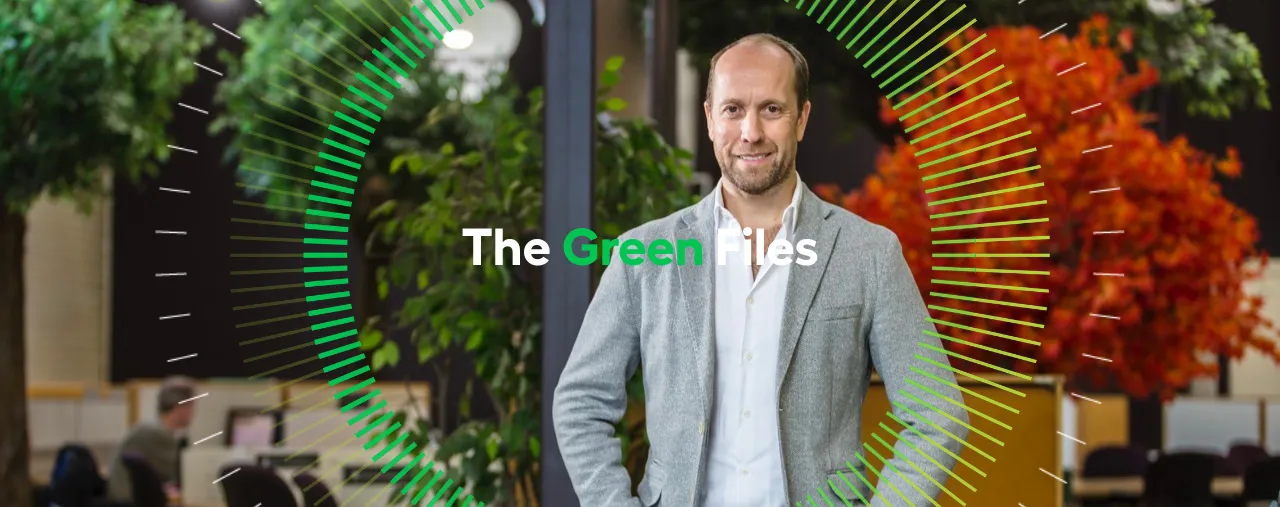
Opening more doors to affordable solar
The Green Files is a unique CEFC series where we talk to the people making a difference in the race to net zero emissions.
Australia may lead the world in rooftop solar, but millions of households have been locked out of its bill-busting advantages.
Most of the four million Australian households and small businesses that have adopted rooftop solar are standalone residences – and reap savings averaging $1,500 annually. But for those living in multi-tenant developments, such as apartment blocks, it’s challenging to install and maintain renewable energy technology.
Several organisations are now stepping in to help the increasing number of people living and running businesses in multi-tenant developments share in the benefits of renewable energy.
One of these is Energy Locals, which was established in response to the disillusionment felt by working in the traditional energy sector.
CEO Adrian Merrick says, “We shake up the status quo in the market and help facilitate the adoption of renewable energy in a sector that has struggled to become part of the transition.”
Merrick recognises the potential presented by Australia’s sunny climate and its world-leading solar energy adoption per capita. Australia also continues to hold the highest solar generation per capita at 1,866 kWh, which is more than seven times the global average.
If you put photovoltaics (PV) on an apartment building in Australia, you're going to reduce your gate (or main) meter costs more than in many other parts of the world. So you certainly get more bang for your buck investing in the same product in Australia,Adrian MerrickCEO, Energy Locals
On top of this, shared PV on an apartment building roof can be far more efficient than that on individual household roofs. “If solar is installed in a home and everyone is out, without a battery, the electricity may go to waste. However, apartment buildings are likely never fully empty and have always-on areas, such as lifts or entrance lighting, to use that energy,” he says.
Embedding renewables
Energy Locals, through its embedded networks, paves the way for developers of new multi-tenant buildings and owner corporations of existing structures to embrace clean and affordable energy.
An embedded network is a private electricity network that services several tenancies within one property. Just like a building may have a single street entrance leading to numerous individual apartment doorways, an embedded network has a master meter that connects directly to the grid. The embedded network then distributes power from the master meter to each home or business within the property, measuring their individual usage.
One of the advantages of being part of an embedded network is that the operator can buy a building’s energy at prices that smooth out the peaks and troughs of any single customer’s usage pattern, and through this the operator can pass on low rates to the tenants.
However, Merrick says, doing this properly involves becoming an energy retailer, which comes with a lot of obligations and complexity.
“Energy Locals manages all those issues for developers, owners and tenants,” he says. “We provide the energy assets needed for a multi-tenant building to run efficiently. That includes solar PV for the entire building; a single connection point to the grid; other assets such as the sub-meters for the individual homes and businesses that run off the main, or gate, meter; and renewable power to common areas including EV chargers.”
Setting Energy Locals apart in the embedded network space is the backing of a consortium including the CEFC and leading core-plus infrastructure investor Palisade Impact.
The support of Palisade and the CEFC enables Energy Locals to fund the costs of market-leading electricity systems for clients.
Merrick says this contributes to Energy Locals’ ability to pass on competitively priced energy for individual homes and businesses, and buildings’ common areas. Energy Locals also provides installation, maintenance and customer support at no additional cost.
Rising tide
Merrick says escalating housing and energy costs are fuelling more multi-tenant builds, with developers racing to fill the supply gap.
“What we’re seeing is more developers demanding the embedded network approach because it makes the building process a lot easier for them, and we've become one of the major players in that part of the market,” he says.
Energy Locals’ ability to supply more affordable energy at a time of rising costs is highly attractive, while the company’s green credentials are increasingly important to both developers and owners.
Netting extra sunshine
To date, Energy Locals’ policy has been to size systems as close as possible to the peak load of individual buildings.
What the company aims to do next is oversize on one building for the benefit of another.
“For example, if you have a tall, skinny building with small roof space, and a lower, wider one elsewhere, we can balance out their solar PV energy via integration with the grid,” Merrick says. “Our aim is to maximise the solar PV through this net arrangement.”
This supercharging of Energy Locals’ rooftop solar capabilities will provide even more affordable renewable power to a larger number of people who have been unable to install their own solar panels.
It will also build more sustainability and reliability into Australia’s energy market as coal-fired power stations continue to close over the coming years.
“There's no mandated requirement for PV to be on the roofs of these buildings, or requirements around the efficiency of a hot water system or whether you need an electric or gas pump. But we’re taking the lead on this because it’s increasingly what apartment buyers and renters are looking for.” Merrick says.




